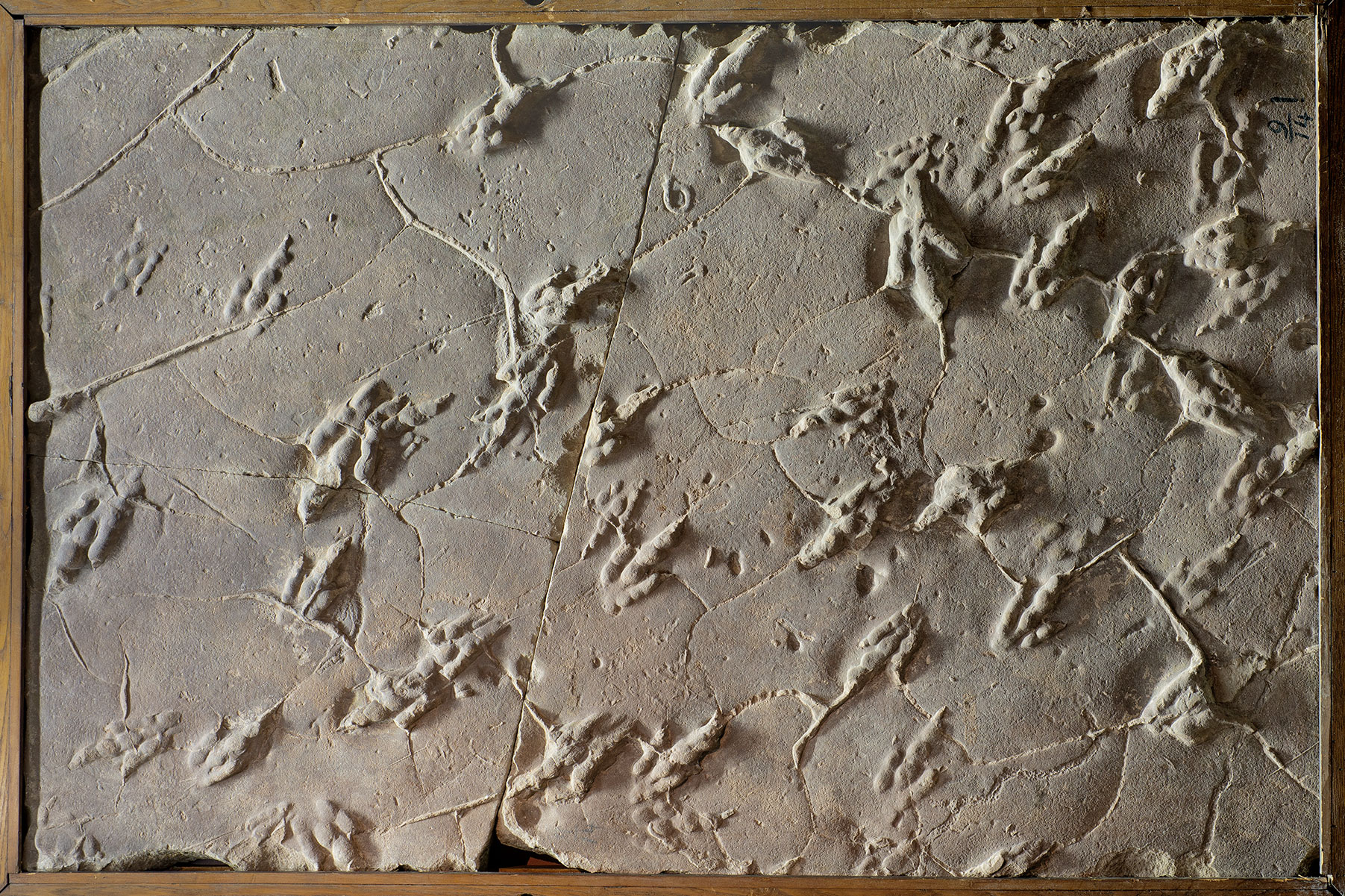
Modern photograph of the Middletown specimen, perhaps the most famous trackway slabs in Hitchcock's collection, due to the number and clarity of the footprints. Image courtesy of Beneski Museum of Natural History at Amherst College.

Modern photograph of the Middletown specimen, perhaps the most famous trackway slabs in Hitchcock's collection, due to the number and clarity of the footprints. Image courtesy of Beneski Museum of Natural History at Amherst College.
This is a modern photograph of the specimen that Edward Hitchcock considered "the gem of the Cabinet." Sometimes, it can be hard to tell whether the tracks in a specimen are impressions (molds) or the material that filled them (casts), but in this case, it is clear that these are casts.
When the fossil footprints of the Connecticut River Valley were first studied, photography was not yet in common use. Edward Hitchcock, Orra Hitchcock, James Deane, and eventually others at first made drawings or tracings of specimens in order to communicate their thoughts about them in personal letters, journals, and books.
The choice of technique both reflected and in some ways determined the features of a footprint that would be emphasized to the viewer. The following images show how certain fossil images were reproduced over time.